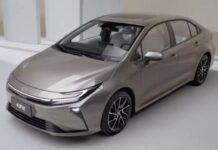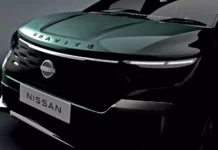The increasing strict requirements set by many governments worldwide regarding car emissions have led to the urgent need to create vehicles that consume clean energy instead of fossil fuels as before.
Along with the popularity of electric/hybrid cars, the automotive industry has also introduced many innovations to meet the specific requirements of these two types of vehicles. Continental, the world’s leading tire manufacturer, has introduced a new wheel concept that can overcome the drawbacks and improve the performance of electric cars.
Operation mechanism of the braking system on electric cars
The first thing to mention is the braking system of the car. In electric and hybrid cars, the braking system combines friction braking with regenerative braking. During deceleration, the vehicle’s momentum is converted into electrical energy to increase the operating range of the car. Pressing the brake pedal does not necessarily activate the friction braking system. And when driving, the driver should use friction braking as little as possible.
 Structure of the wheel in Continental’s concept design.
Structure of the wheel in Continental’s concept design.
The problem arises when the vehicle needs to be braked suddenly, and the deceleration torque of the electric motor is not enough energy, so friction braking is necessary in this case. Naturally, the driver will need a reliable braking system to ensure safe driving. However, due to less use, the friction braking system may have issues of rust on the brake disc due to less friction between the brake pad and the brake disc. In addition, the emergency braking system in the car’s safety package relies entirely on friction braking.
Continental’s new wheel design and its advantages
The above paradox requires a new solution as conventional brakes are not efficient for electric cars. Therefore, Continental has introduced a new wheel design to solve the problem of movement through electrical energy.
In the concept design, the wheel rim consists of an inner rim made of aluminum, along with a brake disc, and an outer rim with a tire. In contrast to conventional brakes, the brake disc is made of aluminum instead of steel with a larger diameter, for better braking efficiency. The electric vehicle generates additional electrical energy through the recovery process (using the electric motor for braking), allowing the car to travel longer distances and use less friction braking.
The anti-corrosion aluminum brake disc also helps prevent corrosion – the cause of reduced effectiveness on conventional steel brake discs.
 Continental’s new wheel design brings many benefits to electric cars.
Continental’s new wheel design brings many benefits to electric cars.
Another advantage of the new wheel design is weight reduction. Although Continental does not provide an official figure, the design allows future vehicles to be much lighter thanks to the use of lightweight materials.
Moreover, due to the leverage effect with the hub flange on the large-diameter brake disc, a relatively small clamping force is sufficient to achieve high braking efficiency. Since aluminum is a very good heat conductor, the heat generated during braking will quickly dissipate.
Based on initial test results, Continental stated that the aluminum brake disc does not corrode, and wear marks only appear on the brake pads. However, thanks to the intelligent design of the concept wheel, replacing both the brake pad and the wheel is extremely easy.
Another key point is not related to performance. The new brake design helps reduce noise – an important factor for electric cars. Since the brake disc is fixed on the outside and the braking process originates from the inside, the brake caliper can be designed to be extremely lightweight and rigid. The braking force is transmitted symmetrically to the center of the axis, which significantly reduces noise.
NgocDiep (forum.autodaily.vn)






































